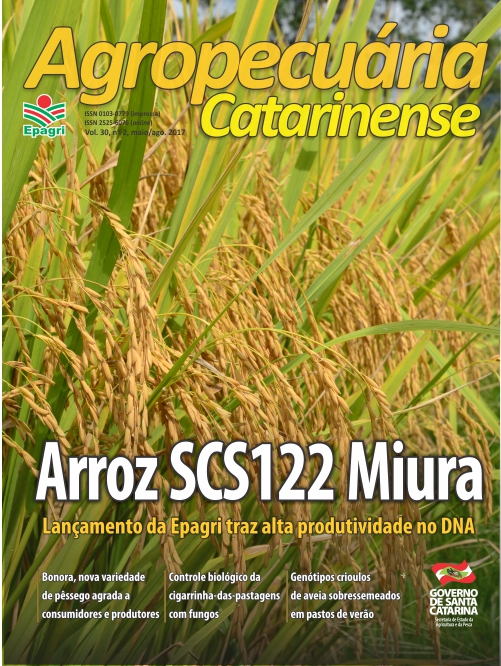Influência dos diferentes tipos de pólen sobre a qualidade do fruto de pitaya
Palavras-chave:
Cactaceae, Hylocereus, polinização artificial, xêniaResumo
Resumo – Com objetivo de avaliar a qualidade dos frutos de Hylocereus undatus, flores foram polinizadas com polens de H. undatus, Hylocereus polyrhizus e Hylocereus costaricensis. Avaliaram-se aspectos como pegamento (%), peso (g), comprimento e diâmetro do fruto (cm), espessura da casca (cm), peso da casca/peso total do fruto, oBrix, número de sementes e peso de 100 sementes (g). O delineamento foi inteiramente casualizado, com 10 repetições. As médias foram comparadas pelo teste de Scott-Knott (p<0,05) e as correlações, pelo teste T (p<0,01). Para todas as fontes de pólen houve 100% de pegamento com correlação positiva entre peso, comprimento e diâmetro com o número e peso de 100 sementes. Pólen de H. polyrhizus e H. costaricensis proporcionaram frutos de maior comprimento e peso de 100 sementes, e H. costaricensis proporcionou frutos com maior peso e diâmetro.
Downloads
Publicado
Edição
Seção
Licença
Copyright (c) 2017 Revista Agropecuária Catarinense

Este trabalho está licenciado sob uma licença Creative Commons Attribution 4.0 International License.






